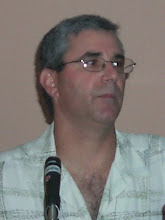There is a very strong sentiment that many startups stress as central to their thinking. They want made in USA apparel, as they believe the domestic consumer values the origin higher and is willing to expend more at retail to get it. The truth of the matter, is this is less true with domestic consumers and more true in overseas markets where "Made in USA" carries panasche. We are pleased to manufacture custom clothing or private labbel apparel domestically, but are always ready to offer import if price points are not workable. Importing apparel has gone from 10% of our business 5 years ago to a projected 45% next year. We handle virtually any sewn product and primarily source on Macau and India. From maternity wear to infantwear to technical garments we have a well established network providing superior quality and price. An advantage we offer is LDP (landed/duty paid) pricing, which means we will handle all logistics and include all duties and fees (portfees, security fees, broker fees, etc) and have the product delivered to your door. The only expenses we do not include are the fee for an import bond and actual freight costs. The advantages are numerous. Besides the obvious advantage of price, the price/value relationship is much stronger. You may fully customize the garment, from stamped logo buttons to printed neck tape to embroidery, applique and hand embellishments. The flexibility to obtain exactly what you are looking for is extreme.
Another advantage of utilizing Style Source for your custom import apparel is that we begin at low minimums. Our starting point for most types of apparel is 1200 per style/600 per color. A few items, like jeans or dress slacks) require 2400 piece minimums. When you consider the price advantage, it is common for the cost of 1200 imported units to be equal to or less than the cost of 700 domestically produced units. This varies though, as duty rates for CVS (chief value synthetic) are 15% higher than CVC (chief value cotton). Bamboo apparel and rayons (modal,tencel, etc) are considered synthetic by US customs. The catagory of apparel also plays a major role, as an item imported as infant sleepers will bear a signifigantly different duty than booties.
Generally speaking, the higher the labor value and the value added content (printing, embroidery, embellishments) the greater the overall savings. This becomes an imperitive when your targeted competition is importing as well.
If you are considering importing custom private label apparel please do give us a call to discuss your specific needs. We can assist you from spec pack development through sampling and sales samples.

